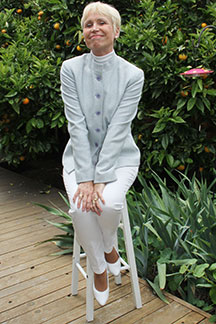At 1,207 feet, the Berlin Television Tower (Fernsehturm) is the tallest structure in Germany. With a million visitors a year, it is one of the most popular tourist attractions in Berlin. The Berlin Television Tower is located at the Alexanderplatz in the city’s center. An exhibition center and restaurant surround its base. The Neptune fountain, which used to stand in front of the Berlin City Palace, adorns the large plaza in front of it. The fountain’s four cascades represent Prussia’s main rivers at the time of the fountain’s construction: the Rhine, Elbe, Oder and Weichsel.
History of the Berlin Television Tower
The Berlin Television Tower was constructed between 1965 and 1969. In 1964, Walter Ulbricht, then leader of East Germany until 1971, decided that East Berlin needed its own television broadcasting system. He decided to build it right in the center of the city. To this day, the Berlin Television Tower remains the only city television tower in Europe. Its dome is modeled after Sputnik, the first artificial Earth satellite. It is said that Walter Ulbricht wanted the Berlin Television Tower to be exactly 365 meters (1,197 feet) in height so that even a child would remember its height – as many meters as there are days in a year. http://www.berlin.de/en/attractions-and-sights/3560707-3104052-berlin-tv-tower.en.html
Indeed, the original Fernsehturm was 365 meters high. But in 1990, an antenna was added increasing its height to 368 meters.
God’s Revenge
The Berlin Television Tower’s design had an unexpected consequence. When the sun shines on its tiled stainless steel dome, the reflection looks like a cross. Since East Germany’s secular had aimed at removing crucifixes from churches, Berliners quickly nicknamed the cross “Gottes Rache” (God’s Revenge). And they nicknamed the tower “St. Walter”, after East Germany’s former leader, Walter Ulbricht.
Telecafé and observation deck
Similar to the Berlin Radio Tower http://www.walled-in-berlin.com/j-elke-ertle/berlin-radio-tower-the-beanpole/, the Berlin Television Tower includes an observation deck and a restaurant. On a clear day, the view from the deck can extend 26 miles into surrounding Brandenburg. The observation deck is located 666 feet above ground. Just a few feet higher, the restaurant – Telecafé – rotates once every 30 minutes and offers coffee, snacks and full meals.
For a sneak peek at the first 20+ pages of my memoir, Walled-In: A West Berlin Girl’s Journey to Freedom, click “Download a free excerpt” on my home page and feel free to follow my blog about anything German: historic or current events, people, places or food.
Walled-In is my story of growing up in Berlin during the Cold War. Juxtaposing the events that engulfed Berlin during the Berlin Blockade, the Berlin Airlift, the Berlin Wall and Kennedy’s Berlin visit with the struggle against my equally insurmountable parental walls, Walled-In is about freedom vs. conformity, conflict vs. harmony, domination vs. submission, loyalty vs. betrayal.













